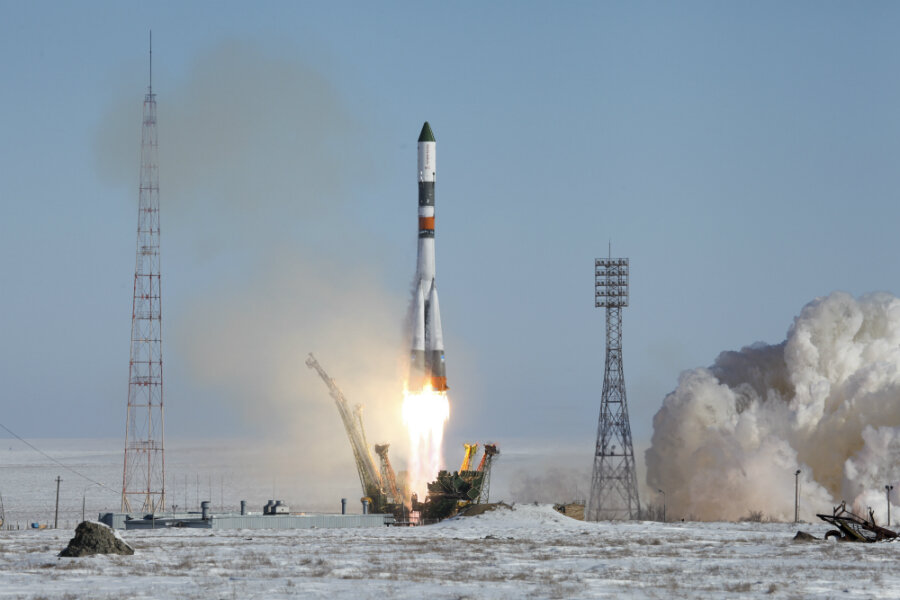SpaceX cargo delivery delayed as Russia launches last mission for historic Soyuz-U
Loading...
The International Space Station has a busy few days ahead, with two robotic spacecraft closing in on the orbiting outpost.
The first one, launched on Wednesday and scheduled to arrive Friday morning, is Russia’s Progress-66 cargo mission, carrying nearly three tons of food, clothing, fuel, and other supplies for the astronauts onboard. The other is a SpaceX Dragon capsule carrying more cargo and several experiments, including an ozone monitor and a lightning imager. It aborted its first approach on Wednesday because of a GPS error, and could try again as early as Thursday.
While these missions might seem like typical, 249-mile-high delivery runs, they also bring together the past and the future of space exploration.
For Russia, it will mark the last flight of a venerable Soyuz-U launcher. “The Soyuz-U was a workhorse for the Russian space program,” wrote Spaceflight Now’s Stephen Clark, “launching nearly 800 times with military spy satellites, cosmonaut crews and space station resupply missions to a series of Russian orbital outposts since 1973.”
This nearly 44-year track record earns it the distinction of having the “longest lifetime of any orbital rocket,” according to NASASpaceflight.com. During that time, Soyuz-U rockets launched 765 successful missions, including Soyuz 19, which made a historic orbital rendezvous with an American Apollo spacecraft in 1975.
Production of the Soyuz-U ceased in 2015 because of heightened tensions between Russia and Ukraine, where parts of the rocket’s guidance system were built. But newer versions of the Soyuz booster are now back at work, with upgraded engines, as Mr. Clark points out. That’s good news for NASA, which has relied on Russia to carry its astronauts into orbit since the Shuttle program ended in 2011.
But if SpaceX has its way, that won’t be the case for long.
The Hawthorne, Calif.,-based company has already done a brisk business carrying experiments to and from the space station. When its latest Dragon docks, it will mark the company’s 10th encounter with the ISS, as The Christian Science Monitor reported at the time of the launch.
SpaceX hopes to send human astronauts to the ISS sometime next year. But the latest uncrewed mission already has historic significance: It launched from Cape Canaveral’s Pad39A, which also sent the Apollo 11 mission and the first shuttle flight into orbit. After the Dragon detached, the company’s Falcon 9 rocket returned successfully to solid ground – the third time it’s done so.
Breakthroughs like these have observers convinced that private industry is now a key player in American spaceflight.
“Most new space companies (there have been dozens) are not up to the challenge” of spaceflight and will disappear, space policy expert Howard McCurdy, of American University, told the Monitor in an email last week. “Yet if transportation history repeats itself, a few will emerge as dominant providers and become engines of economic growth.”






